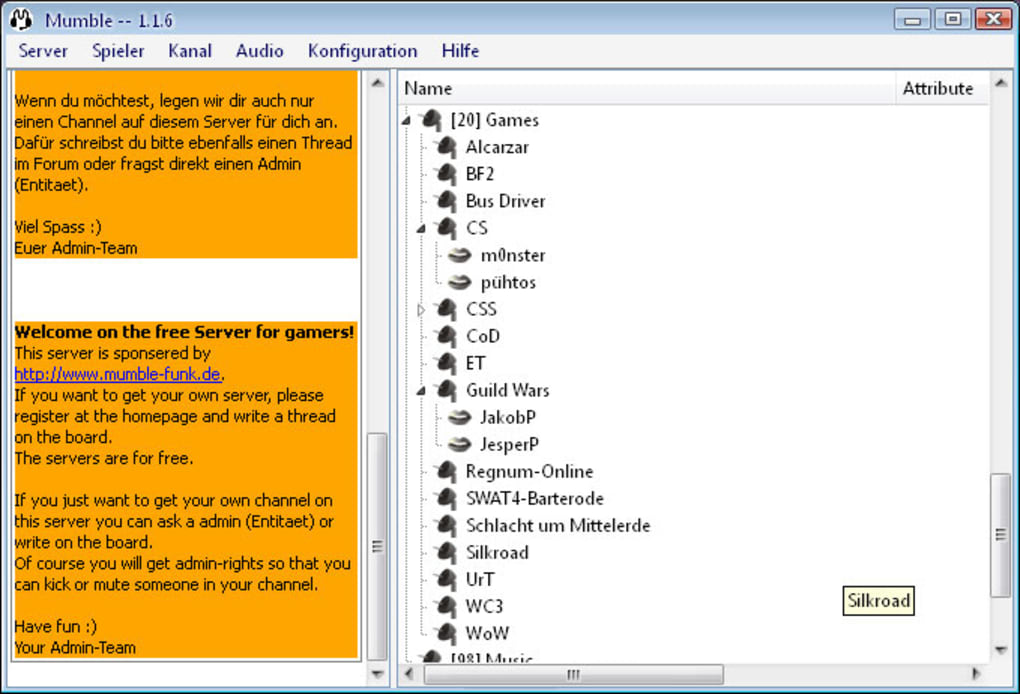

The $var parts of the url are intentional and will be replaced by Riot whenever a widget is loaded (i.e. "creatorUserId": "$matrix_display_name&theme=$theme&avatarurl=$matrix_avatar_url",

Mumble app full#
While just using the URL to a mumble-web instance in a Custom Widget should work for most cases, making full use of all supported features will require some additional trickery. Mumble-web has specific support for running as a widget in a Matrix room. thisis the live demo linked above but using the dark theme ( dark is an alias for MetroMumbleDark).Ĭustom themes can be created by deriving them from the MetroMumbleLight/Dark themes just like the MetroMumbleDark theme is derived from the MetroMumbleLight theme. To select a theme other than the default one, append a theme=dark query parameter (where dark is the name of the theme) when accessing the mumble-web page.Į.g. Mumble-web also includes a dark version, named MetroMumbleDark, which is heavily inspired by MetroMumble's dark version. The default theme of mumble-web tries to mimic the excellent MetroMumbleLight theme.
Mumble app update#
Make sure to back up and restore the file whenever you update to a new version. You can overwrite those by editing the file within your dist folder. The app/config.js file contains default values and descriptions for all configuration options. If mumble-web-proxy is running on the same machine as your web server, use localhost. Replace with the host name of the machine where mumble-web-proxy is running. Here are two web server configuration files (one for NGINX and one for Caddy server) which will serve the mumble-web interface at and allow the websocket to connect at wss:///demo (similar to the demo server). To use this client with any standard mumble server in WebRTC mode, mumble-web-proxy must be set up (preferably on the same machine that the Mumble server is running on).Īdditionally you will need some web server to serve static files and terminate the secure websocket connection (mumble-web-proxy only supports insecure ones). Grumble natively supports Websockets and can run mumble-web in fallback mode but not (on its own) in WebRTC mode. SetupĪt the time of writing this there do not seem to be any Mumble servers which natively support Websockets+WebRTC. customize the theme before building it.Įither way you will end up with a dist folder that contains the static page. The npm version is prebuilt and ready to use whereas the git version allows you Note that npm must not be ran as the root user (even in a container) because it will try to do special things which cause the build to fail, use a non-root user account instead. Or from git (recommended because the npm version may be out of date):
Mumble app install#
Mumble-web can either be installed directly from npm with npm install -g mumble-web Quite a few features, most noticeably allĪdministrative functionallity, are still missing. Performance is expected to be less reliable (especially on low-end devices) than in WebRTC mode and loading time will be significantly increased. This is accomplished with libopus, libcelt (0.7.1) and libsamplerate, compiled to JS via emscripten. In fallback mode, when WebRTC is not supported by the server, only the Opus and CELT Alpha codecs are supported. In WebRTC mode (default) only the Opus codec is supported. Instead Websockets are used for control and WebRTC is used for voice (using Websockets as fallback if the server does not support WebRTC). Running in a browser, both are unavailable to this client. The Mumble protocol uses TCP for control and UDP for voice. Mumble-web is an HTML5 Mumble client for use in modern browsers.Ī live demo is running here (or without WebRTC).


 0 kommentar(er)
0 kommentar(er)
